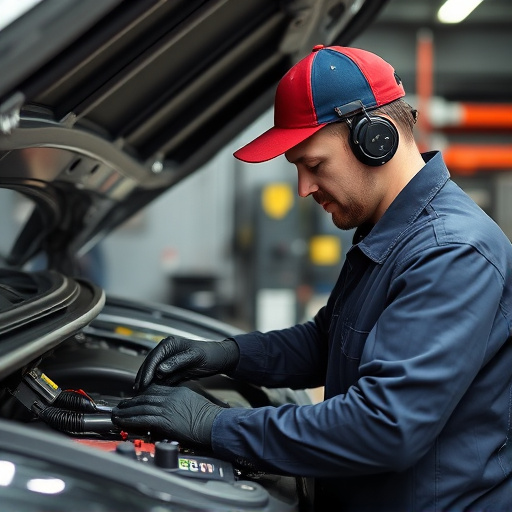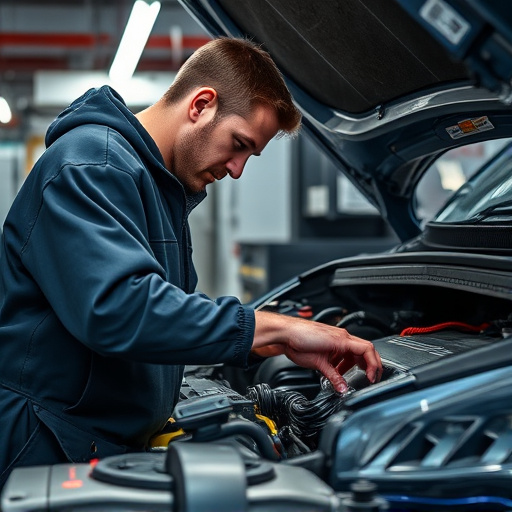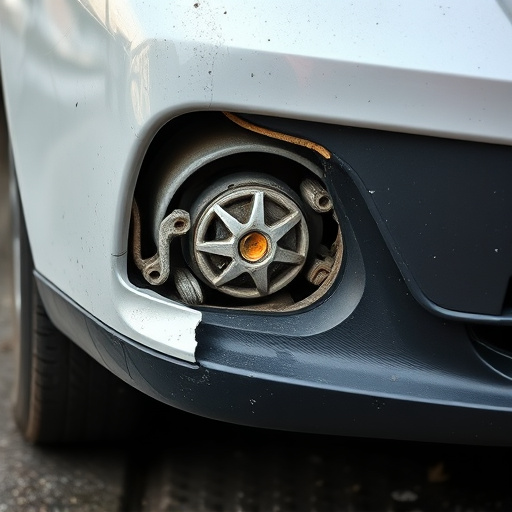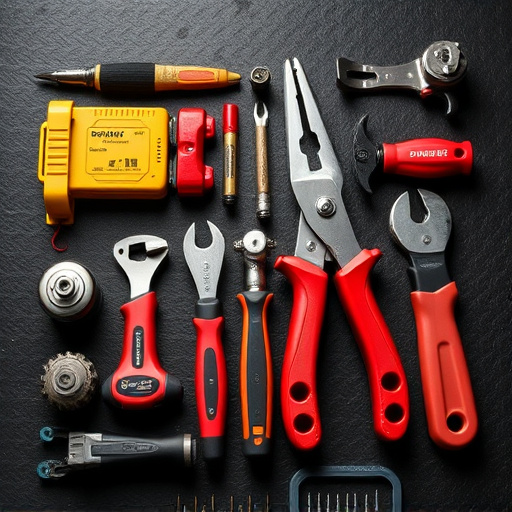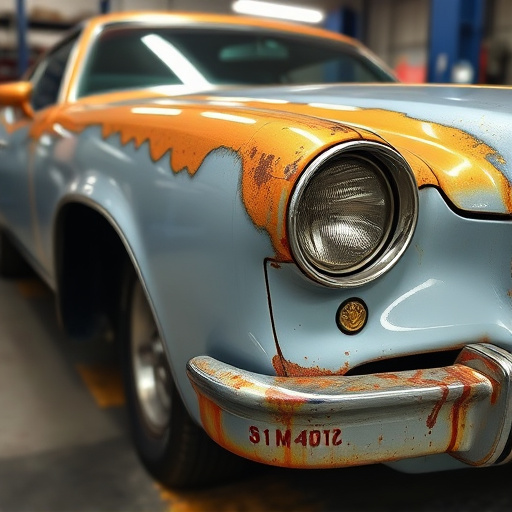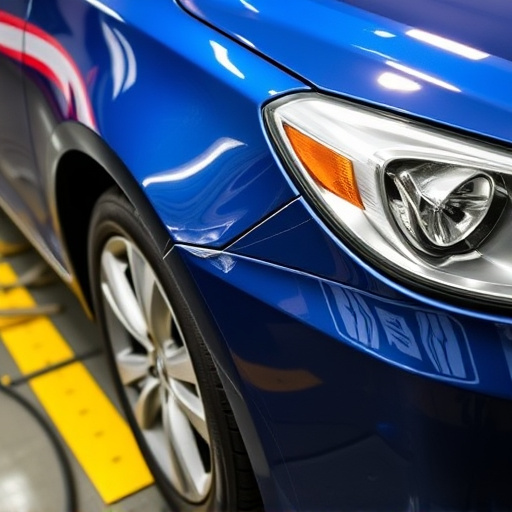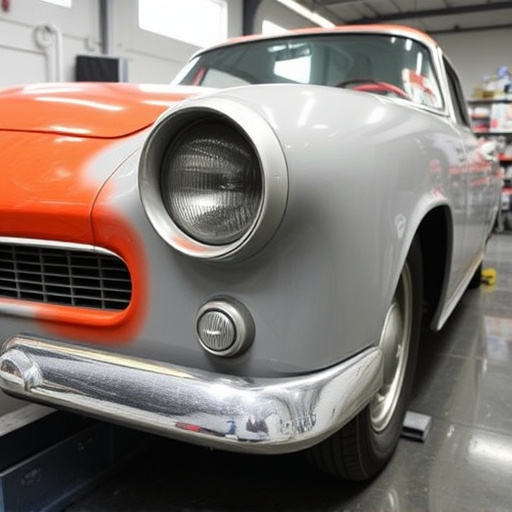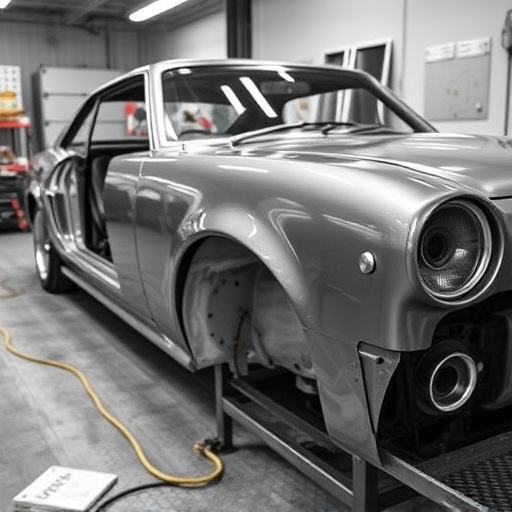Body panel insulation improves vehicle performance and comfort by minimizing heat transfer, enhancing fuel efficiency, and creating a tailored interior environment. Effective installation requires meticulous preparation: cleaning panels, removing debris, using primers or bonding agents for better adhesion, and precise application to contours and edges for optimal barrier protection against heat transfer during both auto painting and body shop services.
“Elevate your vehicle’s performance and comfort with expert tips on installing body panel insulation. This comprehensive guide delves into the world of body panel insulation, exploring its materials and remarkable benefits. From understanding the essentials to preparation steps, we equip you with knowledge for a seamless installation process. Discover efficient application techniques that enhance energy efficiency and protect your vehicle’s interior. Master the art of body panel insulation installation with our practical tips.”
- Understanding Body Panel Insulation: Materials & Benefits
- Preparation Steps for Seamless Installation
- Techniques for Efficient & Effective Application
Understanding Body Panel Insulation: Materials & Benefits

Body panel insulation is a crucial component in enhancing vehicle performance and comfort. It’s a process that involves installing insulating materials between the exterior panels and interior cabin of a car, truck, or SUV. The primary goal is to minimize heat transfer, keeping the interior cool during hot weather and warm during cold spells. This technology isn’t just about comfort; it significantly improves fuel efficiency by reducing the load on the air conditioning system, which is a vital aspect of modern vehicle design.
Choosing the right materials for body panel insulation is key. Options range from traditional fiberglass mats to innovative foam insulations made from recycled materials. Each material offers unique advantages in terms of weight, flexibility, and thermal resistance. For instance, high-density foams provide superior insulation but are heavier, while fiberglass is lighter but may require additional sealing to prevent air leakage. Incorporating body panel insulation during auto glass replacement or tire services can enhance the overall vehicle repair experience, ensuring a more comfortable, efficient, and eco-friendly drive.
Preparation Steps for Seamless Installation

Before starting the installation process, thorough preparation is key to ensuring seamless integration of body panel insulation. Begin by thoroughly cleaning and inspecting the vehicle’s body panels. Remove any existing debris, rust, or damaged areas that could affect the adherence of the insulation. This step is crucial in achieving a long-lasting, effective insulative barrier.
Next, ensure the surface is dry and free from moisture to prevent any complications during installation. Consider using specialized primers or bonding agents recommended by the manufacturer for optimal adhesion. Proper preparation will not only facilitate a smoother application but also enhance the overall performance of the body panel insulation, contributing to a more comfortable and efficient vehicle interior in both auto painting and body shop services.
Techniques for Efficient & Effective Application

When it comes to the efficient application of body panel insulation, proper preparation is key. Before beginning, ensure the surface is clean, dry, and free from any debris or contaminants. This step is crucial as it guarantees a smooth base for the insulation, promoting better adhesion and long-lasting results. Consider using a degreaser or a dedicated car dent removal product to achieve this, especially if there are any existing dents or damages in the panel.
For effective coverage, employ techniques that cater to the unique contours of vehicle bodies. This may involve utilizing specialized tools for reaching tight spots and ensuring even distribution of insulation material. Remember, body panel insulation is not merely about filling gaps; it’s about creating a robust barrier against heat transfer. As such, pay close attention to areas like seams, edges, and corners—these are often overlooked but play a significant role in the overall performance of your insulation job, much like how vehicle body repair techniques focus on restoring structural integrity.
Effective body panel insulation installation requires a blend of knowledge and meticulous preparation. By understanding the materials, their benefits, and following tailored techniques, you can achieve optimal results. Remember, proper preparation is key to a seamless process, ensuring your vehicle retains enhanced energy efficiency and improved performance. Embrace these training tips for installing body panel insulation efficiently and effectively.
